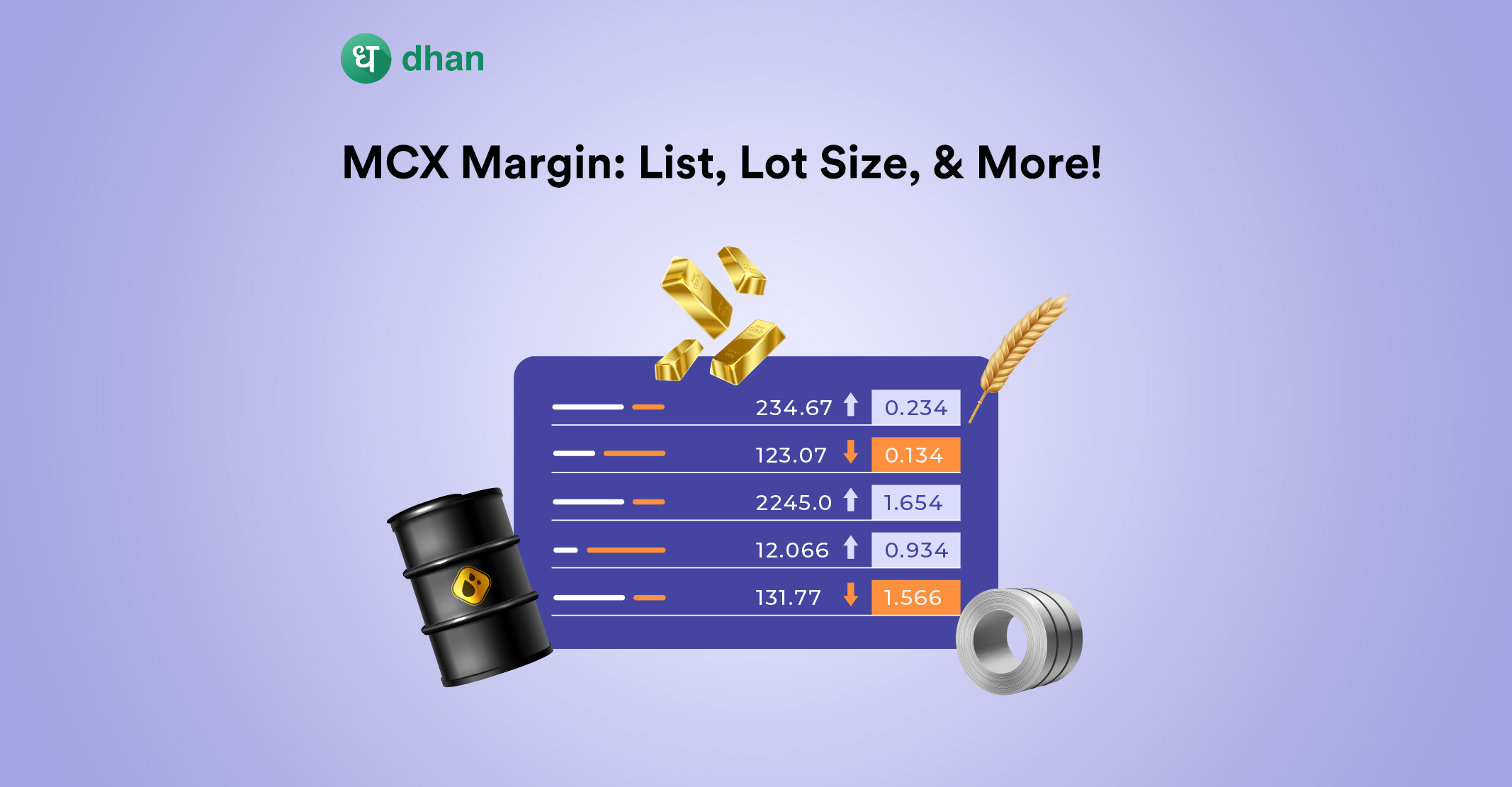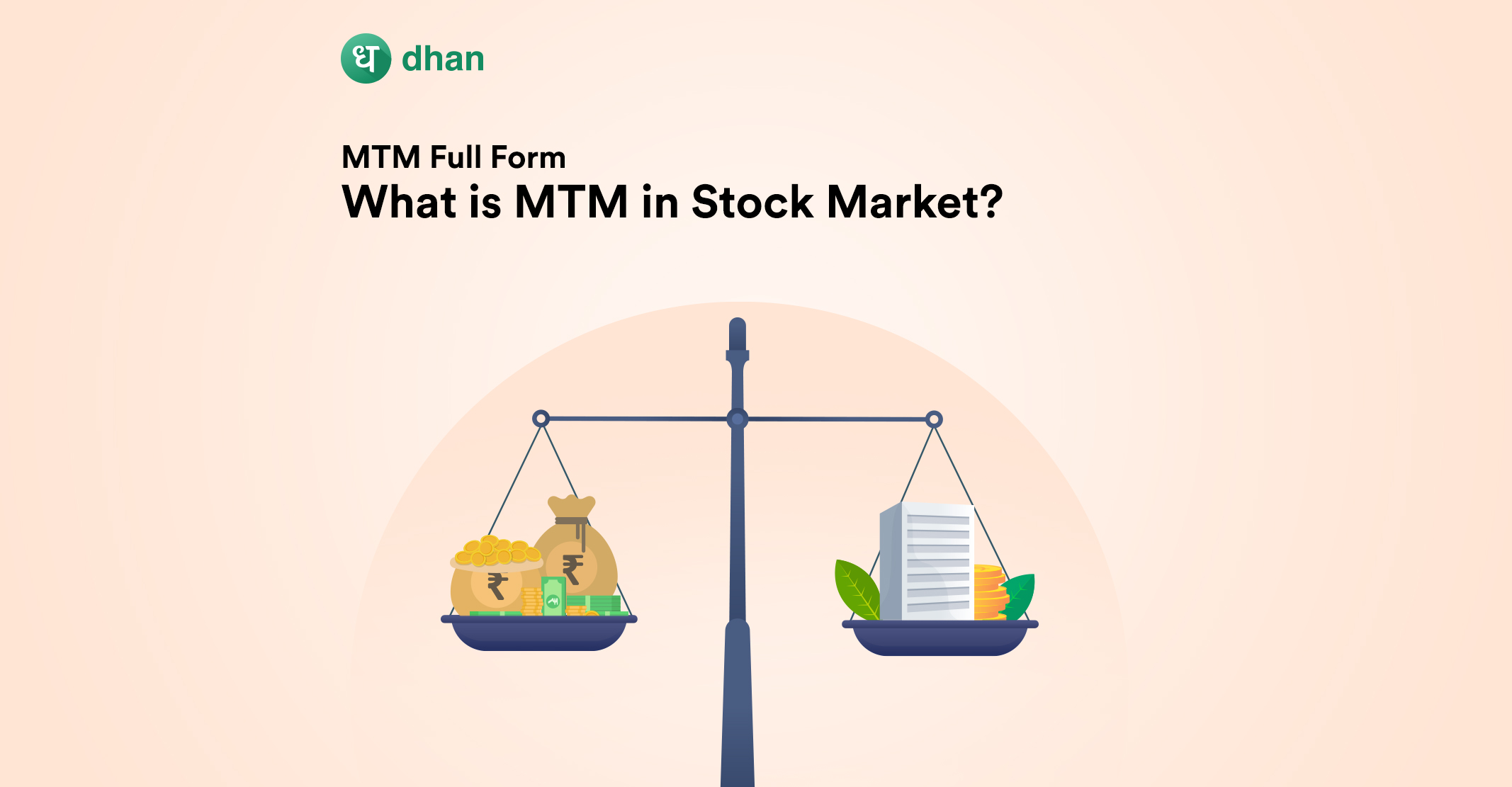Exchange-traded commodity derivatives allow you to take exposure to commodities like gold, oil, natural gas, and agricultural products, without owning them. Wondering how? Via online f&o trading! Read to know more.
What is an Exchange-Traded Commodity Derivative (ETDs)?
Exchange-Traded Derivatives (EDTs) of commodities are financial instruments that derive their value from an underlying product like gold, silver, crude oil, natural gas, or agricultural items.
Being exchange traded, commodity futures and options are highly structured and regulated financial instruments. There’s more.
Unlike traditional commodity trading, exchange-traded commodity derivatives allow you to participate in a commodity’s price movements without owning it or trading it indirectly.
You can buy and sell exchange-traded commodities via MCX, NCDEX, NSE, and others. Each exchange and commodity has its own market timings and holidays:
These contracts specify the underlying commodity’s quantity, quality, and delivery terms. They also outline the future date when the contract will expire, known as the expiration or delivery date.
Types of Exchange-Traded Commodity Derivatives Available in India
As a trader exploring exchange-traded commodity derivatives in India, you have a variety of instruments to get into the country’s vibrant commodity market. Let’s explore some of these options.
1. Commodity Futures Contracts
Commodity futures contracts allow you to speculate on the future price movements of commodities.
Through standardized agreements traded on exchanges like MCX and NCDEX, you can buy or sell a specific quantity of a commodity at a predetermined price on a future date.
You could even balance the risk of your overall portfolio with futures. This method is known as hedging in the futures market.
2. Commodity Options Contracts
As a trader seeking more flexibility, you can also explore commodity options contracts. Commodity options provide you with the right, but not the obligation, to buy or sell a commodity at a set price and time.
This implies you can take advantage of favorable market conditions or protect yourself from price swings. Commodity options let you hedge, speculate, and manage risk based on your market outlook and risk tolerance.
3. Exchange-Traded Notes (ETNs)
When considering exchange-traded notes (ETNs) as a commodity derivative in India, you should understand that ETNs are debt instruments issued by financial institutions.
These notes track the performance of a specific commodity or commodity index. By trading in an ETN, you gain exposure to the price movements of the underlying commodity.
However, it’s essential to note that ETNs carry credit risk. This means you have to depend on the issuer’s creditworthiness.
Therefore, before trading in ETNs, it’s vital to carefully analyze the issuer’s trustworthiness and comprehend the dangers of these debt-based financial vehicles.
Benefits Of Exchange Traded Commodity Derivatives
Here are a few benefits of including commodity ETDs in your portfolio.
1. Diversification
Exchange-traded commodities derivatives diversify your portfolio, which is a major benefit. You can reduce your exposure to stock and bond volatility by diversifying into commodities like crude oil and gold.
2. Price Discovery
The exchange-traded commodity derivatives market offers specific information related to price, i.e., the crude Oil option expiry date MCX. This offers a transparent and regulated platform for price discovery.
By trading these options, you can actively participate in determining fair prices for crude oil contracts. This transparency empowers you to make informed investment decisions based on market trends and capitalize on potential opportunities.
3. Hedging
Exchange-traded commodity derivatives allow you to hedge against price fluctuations. For instance, in the case of crude oil options on MCX, you can utilize these derivatives to protect yourself from adverse price movements by fixing the buying or selling price of crude oil for a specific expiry date.
This hedging mechanism helps manage your risk exposure in the volatile commodities market.
4. Flexibility and Liquidity
Exchange-traded commodity derivatives offer flexibility and liquidity, allowing you to buy or sell positions as per your investment needs easily. MCX Gold Futures lot size, which represents a fixed quantity of gold, allows you to trade in a well-defined unit.
Similarly, the crude Oil option lot size MCX determines the quantity of oil underlying each contract. This standardized approach ensures liquidity and efficient trading.
5. Trade based on Leverage
Another advantage of commodity derivatives is the potential for leverage. With a tiny initial investment, you may manage a larger commodity value. Leverage enhances the possible rewards on your investment, but it also increases the chance of losses.
6. Portfolio Optimisation
By participating in commodity futures & options, you have the opportunity to capitalize on price fluctuations and potentially profit from your predictions. It’s a dynamic and exciting way to engage with the commodities market, offering you the potential for substantial gains while also requiring careful analysis and risk management.
Risks of Exchange-Traded Commodity Derivatives
We’ve discussed in depth the various benefits that exchange-traded commodity derivatives offer.
Being financial instruments linked to the market, ETDs for commodities carry their own risks as well. Knowing these risks can help you trade better.
1. Volatility
While it is obvious that commodity derivatives are volatile, the price fluctuations can be above average in certain instances, at times being significant and sudden.
You’ll be exposed to this risk when you take a position and if the market moves against your position, you may experience the downside.
The volatility of commodities can be influenced by various factors such as supply and demand dynamics, geopolitical events, and macroeconomic conditions.
2. Liquidity Risk
Although exchange-traded commodity derivatives are relatively liquid, there can be instances of illiquidity, especially in less actively traded contracts or during periods of high stress on the market.
In such situations, it may be challenging to buy or sell positions at desired prices, meaning the exchange may not be able to guarantee order fulfillment.
3. Margin Call
Remember how we spoke about leverage? It can amplify your gains but… it can also amplify your loss. Of course, you’ll be able to take up bigger positions with leverage but this brings the risk of being margin called.
If the market moves against your position, you may be required to deposit additional funds to meet margin requirements or risk having your position squared off.
Conclusion
Grasping the concept of Exchange Traded Commodity Derivatives can be a useful step for you as a trader. These derivatives allow you to participate in the commodity market without owning the assets traded.
It’s imperative to remember that ETDs carry a certain level of risk, including the potential for loss. Yet, they can be a beneficial instrument for those aiming to control risk and capitalize on price shifts in the commodity market.
By exploring various types of commodity derivatives, such as futures and options, you can proficiently manage risk, reap benefits from price variations, and distribute your trading funds effectively.
Like this blog? Then you’ll love reading these:



